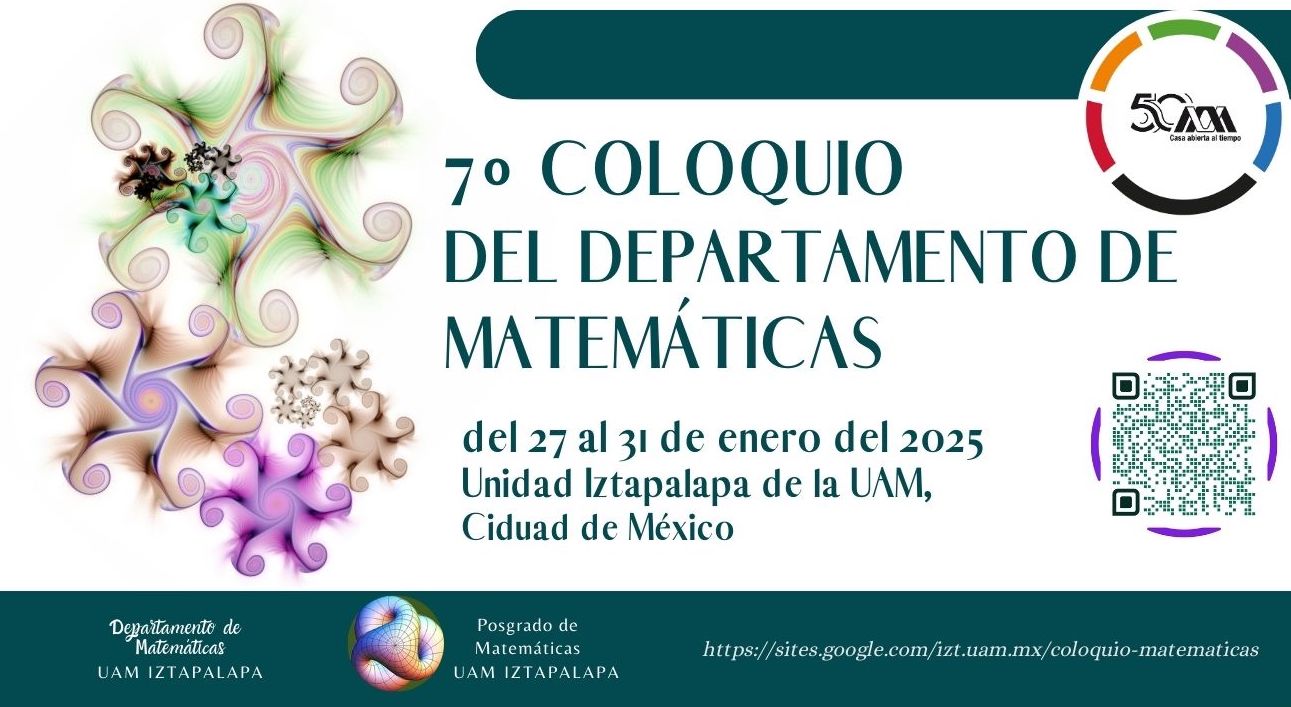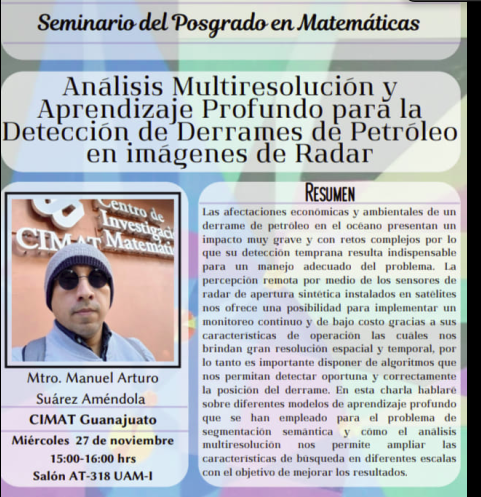Programa de visita del Dr. Carlos Castillo-Chávez al Departamento de Matemáticas UAM-Iztapalapa
Formato de registro para participar en los talleres que impartirá el Dr. Castillo-Chávez
Professor Carlos Castillo-Chavez is a Regents Professor and a Joaquin Bustoz Jr. Professor of Mathematical Biology at Arizona State University who has coauthored over 200 publications. Recognitions to his work include: three White House Awards (1992,1997, and 2011), the 2010 American Mathematical Society. Distinguished Public Service Award and the 2007 AAAS Mentor award. He is a fellow of the AAAS (American Association for the Advancement of Science), SIAM (Society for Industrial and Applied Mathematics), AMS (American Mathematical Society), and ACE (American College of Epidemiology). He holds honorary Professorships at Xi’an Jiatong University in China and Universidad de Belgrano in Argentina. Past appointments include a Stanislaw M. Ulam Distinguished Scholar at Los Alamos National Laboratory, Cátedra Patrimonial at UNAM in México, and a Martin Luther King Jr. Professorship at MIT. He is a member of the Board of Higher Education at the National Academy of Sciences (2009-2016) and serves in President Barack Obama Committee on the National Medal of Science (2010-2015).
Miércoles 28 de Mayo
10:00-12:00 hs. Conversación con estudiantes y profesores interesados en discutir sus problemas de investigación.
12:00-14:00 hs. Comida
14:00-16:00 hs. Taller para estudiantes de licenciatura (40 lugares). Si hay estudiantes de posgrado interesados en asistir también lo pueden hacer.
Título del taller: Introduction to Mathematical Epidemiology
Resumen: In this workshop, I will discuss the basic epidemiological models in discrete and continuous time and present applications to communicable diseases, like influenza or tuberculosis.
Prerrequisitos: Cálculo, ecuaciones diferenciales y deseable álgebra lineal.
Jueves 29 de Mayo
10:00-12:00 hs. Taller para estudiantes de posgrado (40 lugares)
Título: Time scales and population structure in the study of epidemics.
Resumen: In this lecture, I will introduce participants to slow and fast diseases as well as structured population models - age- structure. Applications to fast and slow diseases will be highlighted.
Prerrequisitos: Ecuaciones diferenciales y álgebra lineal.
12:00-14:00 hs. Comida.
14:00-16:00 hs. Conversatorio con estudiantes y profesores interesados en discutir sus problemas de investigación.
Viernes 30 de Mayo
10:00-12:00 hs. Conversatorio con estudiantes y profesores interesados en discutir sus problemas de investigación.
12:00-14:00 hs. Comida.
14:00-15:30 “Charla informal” con estudiantes, profesores (oportunidad para hablar de movilidad!!)
Título: What should the role be of public universities?
Resumen: In this lecture, I will discuss the role of access, excellence and impact in public institutions as well as the role of mentorship. What should the 21st Century or Professor should look like?
16:00--17:00 hs. Seminario de matemáticas aplicadas y computacionales & Plenaria Semana de las matemáticas
Título: Mathematical, Computational, and Theoretical Epidemiology: Challenges and Opportunities
Resumen: The marriage of mathematics and epidemics has a distinguished history with a plethora of successes that go back to the work of Daniel Bernoulli (1700 – 1782), Nobel Laureate and physician Sir Ronald Ross (1911), and associates. Physicians established the field of mathematical epidemiology in their attempts to diminish health disparities, the consequences of poverty and the lack of access to health services, at levels of organization that went beyond the treatment and care of individual patients. The last four decades have seen continuous advances in the fields of computational, mathematical and theoretical epidemiology and immunology with emphasis in connections to public health policy. It is therefore not surprising to see the growth of computational challenges and opportunities in response to demands generated by the study disease dynamics over multiple time scales and levels of organization. In this lecture, I will revisit some of the history of the field and discuss recent applications involving the research of collaborators and former students. The lecture will be directed to a general audience, that I hope will include mathematical scientist, biologists and researchers interested in the health sciences.
17:00-18:00 hs. Clausura de la semana de matemáticas













